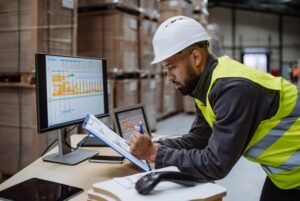Cybersecurity in software projects has become a critical concern for businesses worldwide. With cyber threats growing in sophistication and frequency, protecting your software from vulnerabilities is more important than ever. Innerworks understands the risks involved and advocates adopting comprehensive security measures throughout the software development process. This blog highlights the best practices for cybersecurity in software projects, helping teams build resilient applications that safeguard sensitive data and maintain user trust.
Understanding Cybersecurity Risks in Software Development
Software projects face numerous cybersecurity risks, from data breaches and injection attacks to insecure APIs and insider threats. These vulnerabilities can cause significant financial and reputational damage if not addressed properly. Innerworks emphasizes the need to identify potential threats early to reduce risk exposure. Addressing security concerns during development is more cost-effective than fixing breaches after deployment. A proactive security mindset is essential for successful software delivery.
Best Practices for Cybersecurity in Software Projects
Incorporate Security in the Software Development Lifecycle (SDLC)
Integrating security throughout the software development lifecycle is foundational to reducing vulnerabilities. Innerworks ensures security checkpoints are embedded at every stage, including planning, design, coding, testing, and deployment. Utilizing threat modeling and risk assessments during the SDLC helps uncover weaknesses and prepare mitigation strategies, ultimately strengthening the final product.
Conduct Secure Coding Practices
Writing secure code is a cornerstone of cybersecurity in software projects. Innerworks developers follow industry-recognized standards such as OWASP and CERT to avoid common vulnerabilities like SQL injection, cross-site scripting (XSS), and buffer overflows. Regular code reviews and employing static code analysis tools help catch issues early, preventing exploitable weaknesses from reaching production.
Implement Strong Authentication and Access Controls
Robust authentication mechanisms and access controls are vital to protecting applications from unauthorized access. Innerworks advocates for multi-factor authentication (MFA) to add an extra layer of security and enforces the principle of least privilege, ensuring users and services only have the permissions they need. Securing API endpoints and managing sessions carefully also prevent attackers from gaining unauthorized entry.
Regular Security Testing and Vulnerability Assessments
Continuous security testing helps detect and resolve vulnerabilities before they can be exploited. Innerworks incorporates penetration testing and dynamic analysis into the software development workflow. Automated vulnerability scanning tools are also used to monitor applications regularly. Scheduling routine security audits and patch management ensures that software remains secure against emerging threats.
Secure Data Handling and Encryption
Protecting sensitive data is a priority in any software project. Innerworks implements encryption for data both in transit and at rest using secure protocols like TLS/SSL. Effective key management practices ensure that encryption keys are stored and accessed securely. These measures protect user data and maintain confidentiality even in the event of a breach.
Keep Dependencies and Libraries Up-to-Date
Third-party libraries and dependencies can introduce security risks if left outdated. Innerworks monitors all software components regularly to identify vulnerabilities and applies updates promptly. Maintaining a comprehensive software bill of materials (SBOM) allows the team to track all dependencies, ensuring the software remains secure against threats hidden in external code.
Educate and Train Your Development Team
Human error is often the weakest link in cybersecurity. Innerworks prioritizes ongoing cybersecurity training for developers to cultivate a security-first mindset. Awareness sessions and collaboration between security and development teams promote best practices and keep everyone informed about the latest threats and mitigation techniques.
Tools and Resources to Enhance Cybersecurity in Software Projects
Innerworks uses a range of industry-leading tools to support secure development and testing processes. Tools like OWASP ZAP, Snyk, Burp Suite, and SonarQube are integral to identifying vulnerabilities, automating scans, and monitoring security status. Automation streamlines security workflows, helping developers address issues quickly without sacrificing productivity.
Case Study: How Innerworks Secured a Major Software Project
In a recent project, Innerworks partnered with a fintech company to enhance their application’s security posture. By integrating secure coding standards, conducting frequent penetration tests, and updating third-party components regularly, Innerworks successfully mitigated several high-risk vulnerabilities before launch. This proactive approach prevented costly breaches and ensured regulatory compliance, demonstrating the effectiveness of best practices in real-world applications.
Takeaway
Cybersecurity in software projects is essential to protect both businesses and end-users from ever-evolving threats. Innerworks champions a comprehensive approach, embedding security throughout the development lifecycle and empowering teams with the knowledge and tools needed to build safer software. Adopting these best practices can transform your software project into a robust, secure product that stands strong against cyberattacks. Take the first step today by assessing your current security measures and consulting with Innerworks to enhance your software’s defence.







